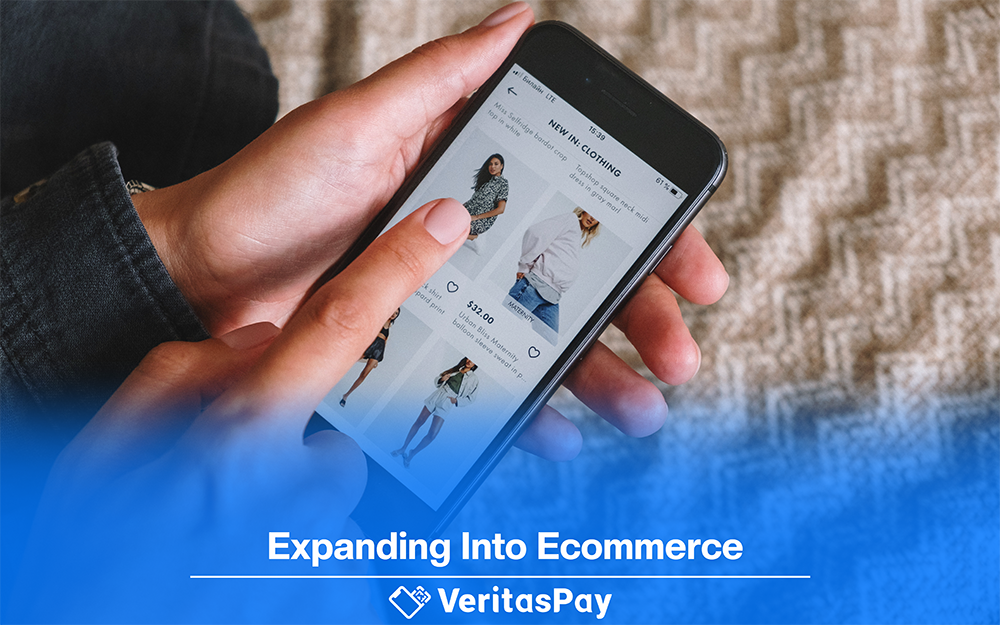Expanding Into Ecommerce
Posted: June 2022

The world lives online. Every single consumer is on the internet, browsing away for anything under the sun, like shopping for stuff they may or may not need. Such is why it's almost automatic for today’s businesses to be available online, specifically as an ecommerce website.
If you are among the few who are still on the fence about expanding into ecommerce, this piece will help you identify and understand the necessary items that ought to be on your checklist.
First off, why should you expand into the online arena? What gives?
Well, take it from MarketResearchPhilippines.com:
The country's e-commerce revenue currently contributes 3.4 percent or equivalent to USD 12 billion to its GDP. However, the government has stated their plan to increase e-commerce contribution to 5.5 percent or USD 24 billion by 2022. The expected growth will require increased e-commerce merchants to up one million, deemed possible as the Philippines now stands as Southeast Asia's second-ranked market, next to Indonesia.
That may look gibberish to some, but no need for any noses to bleed. All that simply establishes ecommerce’s enormous momentum, something that cannot be stopped any time soon. In fact, unless the internet suddenly ceases to exist, which is next to impossible, ecommerce will just rise, rise, and rise some more.
Ecommerce is a go-to platform for selling because it takes less effort for customers, yet it virtually does the same while sometimes offering more, and everyone knows it, both your target market and your competitors.
Now, let’s move on to three important things you need to heavily consider and take note of as you expand into the ever-competitive industry.
Checkout page / Digital payment capability
You need a checkout page so you can be a legit, full-blown ecommerce website. Without one, you’re just basically a product catalogue, and you really don’t need a website. You’re also better off promoting through social media in that case.
A checkout page widens your sales opportunities because you offer more payment options and you’re able to process them faster. You improve the shopping experience as well because it’s done end-to-end, from browsing to purchasing.
Furthermore, it adds legitimacy to your business and brand. It shows how good your payment acceptance capabilities are, and because it eases the transaction process, it strengthens your customer service.
Don’t integrate a checkout page for the sake of having one, though. If you decide to transition into the ecommerce world, you might as well be equipped with the right capabilities. Outside of the standard cash-on-delivery method, most checkout pages’ digital payment capabilities only include online banking and card payments (credit and debit) - sometimes fewer. Look for ones who can process not just cards and bank payments, but mobile wallets as well, especially now that QR code payments are very in-demand.
Lastly, there’s security, something that's quite vital in payment technology. There are a handful of ways to protect you and your customers’ data, but as we’ve said time and again, the barometer should be compliance to PCI-DSS. It’s the international standard for a reason, as evident in the growing number of compliant brands from across the globe.
Mobile responsiveness
Mobile responsiveness is your website’s ability to adjust and appropriately fit its content into the varying sizes of mobile screens.
Why is this important? Well, for one, majority of online shoppers are on their phones, and having an unresponsive site means you’ll have customers constantly zooming in and zooming out just to read your content. You don’t want that - that's one quick way to drive them off.
With a ‘responsive’ webpage, everything in a page is accordingly fit so it can be read and tapped easily, allowing any customer to navigate just as one should when in a desktop.
Search Engine Optimization (SEO)
Google makes the whole internet go around, and once you enter their marketing world, you ought to remember that SEO is king.
Having an optimized page for search engines means Google thinks your site’s content is good, so much so that it will bring your site at the forefront of search results. With that is an online visibility you need as you’ll pop up on targeted searches made by your target market. When executed well, it will help you be relevant to other audiences too, who you might convert into actual buyers.
Ecommerce is competitive, but...
In conclusion, it’s no secret that ecommerce is as competitive as any industry out there, but if you’re your selling is good and your website is equipped enough, specifically in the three aspects we mentioned above, you have a good fighting chance.
Head on over to our VeritasPay Checkout page and learn more. We built it to provide our clients with the key necessities in digital payment acceptance.
As VeritasPay continues to provide high-quality payment solutions and promote cashless transactions, the company is also dedicated in bringing in fresh and informative content. We’ll be continuing to share new articles about our products, services, and varying subjects within the industry as we move forward.
Contact us here to know more.
Related Articles

